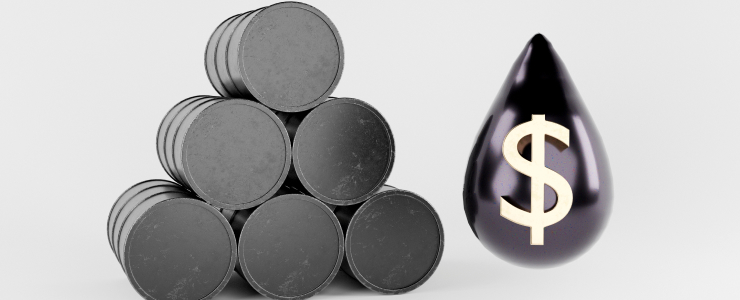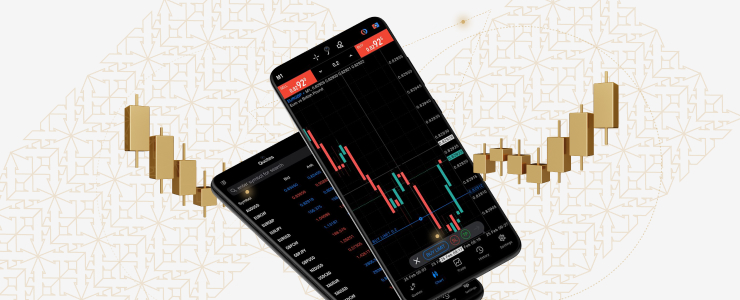Currency is what people use to buy and sell things. It’s usually paper money or coins made by government, and everyone agrees on its value. Today, currency is the main way we trade, replacing old systems like bartering.
Trading currencies is the purchase and sale of such currencies as the US Dollar, the Euro, and the British Pound. Simply known as forex trading, it involves the purchase of a currency while simultaneously selling another with the aim of generating revenue on currency movements.
The exchange rate indicates the value of one currency in relation to another. That’s why those are displayed in pairs, such as EUR/USD. These rates change all the time due to economic or political news. This is what makes currency trading possible.
The foreign exchange market is one of the largest in the world, with $7,5 trillion worth of currencies traded each day. Trades usually happen in large amounts, starting at 100,000 units. Most forex traders are professionals working for banks or big companies. There’s no physical place where forex trading occurs. It’s all done online and runs 24 hours a day so people around the world can trade at any time.
Earlier, banks, institutional investors, and hedge funds controlled the trading of currencies. Today, however, with the development of technology, literally anyone can trade currencies.

Top 10 most traded currencies
Currency trading can be a great way to add variety to your portfolio when things start to feel stuck. Every trader or portfolio manager should know the basics of forex. Let’s look at some of the most traded currencies, which are involved in a very high percentage of trades and every trader should be familiar with.
USD (US dollar)
The US dollar is the official currency of the United States and is the most traded currency in the world. It’s issued by the Federal Reserve (Fed). Why is it so popular? Because the US has the world’s biggest economy and the dollar is the main global reserve currency, meaning it’s widely held by banks around the world. Also, many important goods like oil, gold and copper are priced in dollars.
The dollar’s value is influenced by how well the US economy is doing and global demand for the dollar. It can also be affected by countries that use the dollar as their official or unofficial currency, like Panama and El Salvador.
EUR (Euro)
The euro is the official currency of the European Union and the second most traded currency in the world. It’s issued by the European Central Bank (ECB). It is important for two main reasons. The euro’s value is impacted by economic news and political events in the EU, such as ECB updates, GDP numbers, elections and job data.
JPY (Japanese Yen)
The yen is Japan’s currency and the third most traded globally. It’s issued by the Bank of Japan (BoJ) and is also a major reserve currency. Why does it matter? Japan has a strong manufacturing economy. Its exports, like cars and electronics, can influence the yen’s value. Oil prices also affect the yen because Japan imports most of its energy. China’s currency can impact the yen too, as both countries compete in manufacturing.

GBP (Great Britain Pound)
The pound is the official currency of the UK and its territories, and it’s the fourth most traded currency worldwide. It’s issued by the Bank of England. What moves the pound? UK economic performance like GDP, jobs or inflation, Bank of England policy and political events like Brexit.
AUD (Australian dollar)
The Australian dollar is the fifth most traded currency in the world, heavily influenced by commodity prices due to Australia’s strong mining and export sectors. Issued by the Reserve Bank of Australia (RBA), it’s also one of the top reserve currencies globally.
AUD’s value is closely tied to export commodities like coal, iron ore, and copper, Australia’s trade balance and foreign debt levels as well as interest rate differentials with other central banks.
CHF (Swiss Franc)
The Swiss National Bank (SNB) is unique compared to other major central banks in that it is partly privately owned and partly publicly owned. Under this structure, over half of the SNB is owned by Switzerland’s states (cantons) and other institutions of the public sector.
The board of governors of SNB is fewer in number than most, and monetary policy matters are decided upon by three influential bank chiefs who meet quarterly. They set the interest rate among a range of plus or minus 50 basis points. This structure of the system keeps the financial and economic systems of Switzerland stable.
CAD (Canadian dollar)
The Canadian dollar ranks sixth globally in trading volume and if often referred to as a commodity currency due to Canada’s export-heavy economy. Issued by the Bank of Canada (BoC), CAD is sensitive to oil prices and economic ties with the US, Canada’s largest trading partner. Key influences on CAD include commodity prices, especially crude oil, US economic performance and interest rate gaps between the BoC and the Fed.
NZD (New Zealand dollar)
The New Zealand dollar is another popular currency and is closely linked to the country’s agricultural exports and trade relationships, especially with China and Australia. Key influences on NZD include:
Export volumes of dairy and meat, imports like oil and machinery and relative interest rates set by the Reserve Bank of New Zealand.

ZAR (South African Rand)
The South African Reserve Bank (SARB) is South Africa’s central bank, responsible for price stability, foreign exchange market interventions and managing gold reserves. Only South Africa residents can vote at the SARB’s annual general meeting, with a limit of 10K shares per shareholder to prioritse the economy over private interest. The bank is overseen by a 15-member board, including the governor, who meet regularly to manage monetary policy.
CNH (Chinese Renminbi) & Hong Kong Dollar (HKD)
The Chinese Renminbi (CNH) is the official currency of the People’s Republic of China and is guided by a controlled floating system, depending on China’s trade, policies, and relationship with leading economies, most importantly the US.
The Hong Kong Dollar (HKD) is the official currency of Hong Kong. It is not a major reserve currency, but it has extra volatility due to political instability.
Why is the USD the most powerful currency?
The US dollar is the world’s top currency because it’s trusted and widely used around the globe. It’s called a reserve currency, meaning other countries hold it and use it for international trade. This strong position comes from the size of the U.S economy, its stable government and the dollar’s strong value.
These major currency pairs are the most heavily traded in forex trading:
- EUR/USD
- USD/JPY
- GBP/USD
- USD/CHF
These four major currency pairs belong to the Group of Ten (G10) currency group and are deliverable currencies. These currencies are among the most frequently traded pairs for speculative purposes, even though they account for a big portion of the volume associated with economic transactions.
Other popular pairs include:
- USD/CAD
- AUD/USD
- NZD/USD
Exotic currencies are not traded as much and are mostly used in specific countries. Some of these are:
- TRY (Turkish lira)
- IQD (Iraqi dinar)
- THB (Thai baht)
Final thoughts
Currency and foreign exchange will become more and more important in daily transactions as financial markets continue to develop and expand globally. The market sector already has daily averages of trillions and trillions of dollars in notional volumes.
Therefore, currencies continue to provide more opportunities for both retail and institutional investors, whether it is through conversion for physical trade or a straightforward portfolio diversification play.
Disclaimer:This information is not considered investment advice or an investment recommendation, but instead a marketing communication..




